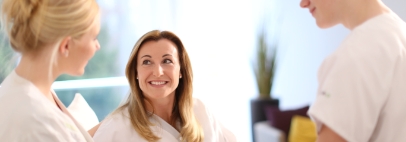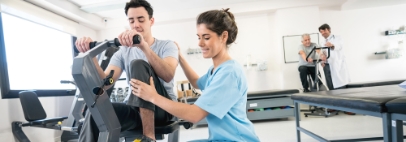- Monday to Friday from 8.00 - 12.00 and 13.00 - 17.00
Signs and side effects
Patients report various symptoms. These include
- Head, neck or facial pain
- stiff neck
- nausea and vomiting
- Tiredness
- Visual disturbances, dizziness, ringing in the ears (tinnitus)
- Pain, tingling or a feeling of falling asleep in the arms
These complaints often lead to restrictions in the mobility of the head, which become noticeable in everyday life, e.g. when looking around (usually in rotation), when stretching or when driving (looking over the shoulder). Many patients also report a disturbed night's sleep: they cannot find a position in bed that is comfortable or relaxing.

.jpg)
.jpg)

